 Submitted by Opir on
Submitted by Opir on

The Runes constitute one of the most ancient alphabetic forms and means of divination. Norse folklore includes a unique brand of ASTROLOGY. Instead of the twelve Houses of Life which are represented in western tradition, Norse lore speaks of the “Twelve Halls of Heaven”, each of which is presided over by a Norse god or goddess and represented by three runestaves. Check each time period to see where your birthday is located and read the Rune Message connected your birthday in the designated magical palace as revealed to mankind by Odin the all-father.

Image by Jana Dubikova from Pixabay

June 21-July 20: Himinbjorg – Hall of the “Cliffs of Heaven”
This Hall is ruled by the Norse watcher god Heimdall and the main runic signifier for this Hall is Fehu (bordered by Dagaz & Uruz), the rune of fulfillment and abundance. The gemstone signifier for this Hall is Moss Agate. Security consciousness is the ruling force of this great Hall. The runestave Fehu carries the energy of wealth and power and the responsibility connected to worldly gain and the proper use of money and credit. Conservation and preservation of the financial status quo while sharing with others is the proper outward expression of Himinbjorg because to share one’s bounty provides spiritual balance. Without this balance, Fehu operates as a ‘murkstave’ and what was once bounty turns into lack on all levels and is often outwardly manifested as greed, envy, and jealousy. Fehu can also designate spiritual impoverishment despite financial or material prosperity. The Rune Fehu is one of the few staves whose essence is present in the English language today via the word “fee.”
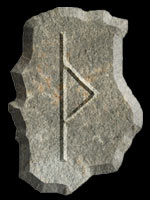
July21-Aug. 21: Breidablikk – Hall of “Broad Gleaming”
This Hall is ruled by the solar god Baldr known as the “Beautiful.” The main runic signifier for this Hall is Thurisaz (bordered by Uruz &Ansuz), the rune of contemplation and counter defense. The gemstone signifier for this Hall is the Sapphire. This Hall is known as the “place without evil” and the ruling force of this palace is masculine energy in action. The runestave Thurisaz always demands transformation at the deepest levels of the Self so often times disruptive or even chaotic episodes manifest that upset the order of life. This is necessary to promote spiritual strength and fortitude. Thurisaz is connected to the ill-natured giants of ancient Norse lore who fought battles and created great opposition. In contemporary times, one might call upon his/her inner giant to buoy confidence during difficult or misfortunate times. When operating as a murkstave, Thurisaz is very unlucky and“Saturnian” in nature often connected to illness. Natives of this Hall will contemplate their inner natures on an ongoing basis throughout life. It can mean the difference between a bed of roses and a bed of thorns.
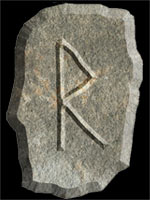
Aug.22-Sept. 22: Sokkvabekk - Hall of “Time and Events”
This Hall is ruled by the goddess Sága who governs the progression of time. The main runic signifier for this Hall is Raidho (bordered by Ansuz &Kano), the rune of flowing processes and momentum. The gemstone signifier for this Hall is Chrysoprase. The ruling force of this Hall is movement and processes both mundane and physical. The runestave Raidho concerns performance and the inherent energies of Raidho call for effectiveness carried out with principle and planning. The essence of Raidho brings about instances in lifewhere one prospers because they are in the right place at the right time and accordingly, doing the right thing through timely and mindful communication. In ancient lore, Raidho means “wheel” and is thought to have literally represented journeys. Expanding upon this premise, in contemporary thought, Raidho represents life’s journey and stepping out to embrace what the world has tooffer. Raidho is also connected to the rhythms of music and the graceful exercises of dance. Raidho operating as a murkstave is indicative of one who is trying to exert too much control and therefore breaking the natural fluidity ofevents. The expression “stuck in the mud” resonates with the murkstave Raidho.
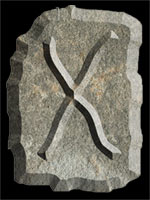
Sept.23-Oct. 22: Glitner - Hall of“Splendor”
This Hall is ruled by the god Forsetti who governs justice and settlements. The main runic signifier for this Hall is Gebo (bordered by Kano & Wunjo), the rune of connections and exchange. The gemstone signifier for this Hall is Opal. In Norse lore, the Hall of Splendor is ornamental and made of silver and gold. According to the Anglo-Saxon, this Hall displays its“worth” which is the prerequisite for “giving.” The ruling force of this Hall is balance and equity based upon harmonious contractual exchange between people. The runestave Gebo designates unions and partnerships with awareness and respect for individuality and equality. In contemporary times, Gebo is often referenced as a “gift” and representative of the outcome between the donor and the recipient. Therefore Gebo calls upon the natives of this Hall to examine personal motivation regarding generosity. When you give, are you doing so expecting something in return? Do you give in exchange for gain, position,or respect? Are you a joyful receiver of gifts when they are presented to you?The ancients believed in equal hand giving where one part of the exchange did not overshadow the other. Gebo does not operate as a murkstave for it has no reverse position but the lower expression of Gebo keeps the energy in the mundane while the higher expression reveals the “immeasurable giving” to humanity.
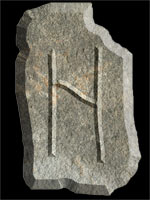
Oct.23-Nov. 22 : Gladsheim – Hall of “Joyous Home”
This Hall is ruled by all of the gods and goddesses of the Aesir andAsyniur. The principal seat belongs to Odin. The main runic signifier is Hagalaz (bordered by Wunjo & Nauthiz), the rune of transformation and transmutation. The gemstone signifier for this Hall is Onyx. The ruling force of this Hall is higher consciousness and awakening. The runestave Hagalaz has a destructive reputation because it thrusts the power of evolution upon the thought processes and the unconscious mind. Disruption is the product of Hagalaz whether it is self generated or caused by uncontrollable outside forces. In this respect this runestave is somewhat reminiscent of the Tower card in the Scared Tarot. Inner strength is the promise of Hagalaz and as each hurdle of life is surmounted, universal growth is provided. Hagalaz does notoperate as a murkstave (inverted energy). It is cyclical in nature and is totally uncompromising by design always demonstrating how the patterns of past operate in the present. No pain no gain. No destruction no creation.
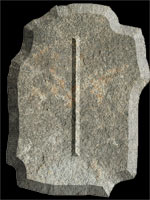
Nov.23-Dec. 20: Ydalir – Hall of the “ Valley of Yew Trees”
This Hall is ruled by the winter god Ullr who specializes in archery and skiing. The main runic signifier for this Hall Is Isa (bordered by Nauthiz& Jera), the rune of stillness and solitude. The gemstone signifier for this Hall is Cat’s Eye. The ruling force of this Hall is gestation or “freeze”with the promise of new birth or “thaw.” In Norse lore, the runestave Isa literally meant “ice” and could bring about all of the implications connected to icy conditions including circumstances whereby one is forced to “chill out.” Inappropriate life action brings about a freeze on all desired activities and outcomes. Spiritually, Isa represents periods of withdrawal with an underlying intention for renewal so, static life conditions are usually temporary if one has gleaned a new perspective and loosened the grip of any long held dogmas. Periods of isolation, self imposed or otherwise are necessary for spiritual growth for those born under the auspices of this palace. Taking time out for contemplation regarding slippery matters is never a bad thing and proves the value of wisdom gained from hindsight. Isa does not operate as a murkstave for it has no reverse status. Just like a flawless shard of ice, Isa’s counsel is crystal clear.
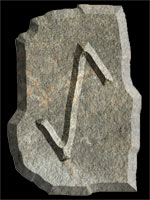
Dec.21-Jan. 19: Landvidi – Hall of the “ White Land ”
This Hall is ruled by the silent god Vidar and the main runic signifier for this Hall is Eihwaz (bordered by Jera & Perth), the rune of transition and regeneration. The gemstone signifier for this Hall is the Topaz. The ruling force of this Hall is renewal. According to legend, the runestave Eihwaz is synonymous with the Yew which was considered the tree of life and death - the great recycling plant of ancient Nordic perception. Natives of this Hall are born mystics who can foresee theconsequences of their actions long before any action takes place. They are the great decision makers who garner good results because they can anticipate all the pros and cons of a deal and then move in to strike while the iron is hot. The discomforts of life are tolerated and understood as the promoters of growth and part of a larger cycle. Longevity is a gift of Eihwaz and this most likely possible because the natives of this Hall literally recycle themselves many times during one lifetime. Eihwaz does not operate as a murkstave but has the reputation of being known as the “death rune”. This might sound frightening to some but not to the natives of this Hall. They are used to standing astride both sides of the threshold.
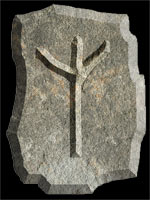
Jan.20-Feb. 18: Valaheim - “Halls of Silver”
This Hall is ruled by the god Vali who later was known as the Christian St. Valentine. The main runic signifier for this Hall is Algiz (bordered by Perth & Sowelu), the rune of protection and safeguarding. The gemstone signifier for this Hall is Amethyst. This Hall has the spirit of the New Age for it is written in the myth of Ragnarök that Vali brings in a new era after the other gods are slain. Along with the new world arose the need for human protection that could only come from otherworldly sources. The runestave Algiz always provided energy that was sought after by the ancients because it is a rune of personal protection not only on the physical level but also on the psychic level. It has the ability to repel all evil by encompassing an individual with a spiritual shield. Natives of this Hall are known as visionary seekers who look beyond the trappings of mundane life. They strive for the Divine knowing that they cannot fail. Operating as a murkstave, Algiz signals paranoia because one has not taken the time to examine the source of what is threatening and the active role one plays in promoting vulnerability due to old behavioral patterns.
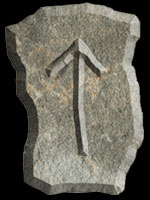
Feb.19-March 20: Noatun – Hall of “Ship Haven”
This Hall is ruled by the god Njord the maritime deity. The main runic signifier for this Hall is Teiwaz (bordered by Sowelu & Berkana), the rune of courage and discrimination. The gemstone signifier for this Hall is Coral. The ruling energies of this Hall are dedication, perseverance, and patience – all qualities of the true Spiritual Warrior. The runestave Teiwaz calls for personal sacrifice coupled with action. The natives of this Hall are called upon to embrace life’s issues whether they are personal, social, or worldly with courage and honor. Principles and ethics are paramount and no promise should be left unfulfilled. The conviction to not only speak but to live one’s truth is difficult but necessary for the natives of this Hall. Equally difficult is picking one’s battles for the natives of this Hall always feel they have something to prove. Operating as a murkstave, Teiwaz signals a misappropriation of energy. Natives can find themselves caught up in an endless string of useless conflicts and lost causes all of which do nothing more than zap the spirit. Navigating these rough waters of life with balance and resolution is the challenge for those who resonate with this Hall.
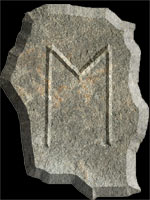
March21-April 20 : Bilskirnir – Hall of “Lightning”
This Hall is ruled by the great god Thor, the deity of thunder and lightning and strength and defense. The main runic signifier is Ehwaz (bordered by Berkana & Mannaz), the rune of progress and movement. The gemstone signifiers for this Hall are Calcite andMalachite. Faith and trust are the ruling forces of this great Hall. Natives of this Hall tend to be movers and shakers with clear goals and preset limits that defy exploitation. The runestave Ehwaz means “horse” and this animal was not only the most important means of travel to ancient people but was also considered a sacred animal. Courtesy of the horse, people were able to get about from one place to another and thus experience a wider world full of opportunities. Partnerships were struck with no more than a handshake and a belief and trust in mutual benefit. The higher expression of Ehwaz designates what belongs to one by Divine right and Divine Will. Sharing what has been gained by profit is a requirement of Ehwaz. Operating as a murkstave, Ehwaz causes stagnation and produces questionable boundaries between people particularly if serious intention to follow through is lacking by one or both parties. Natives of this Hall are used to getting “back up in the saddle” when they are “thrown off” by the misadventures of life.
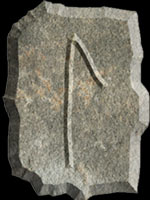
April21–May 20 : Thrymheim – Hall of the “Noisy Place”
This Hall is ruled by the giant Thiazzi and his daughter Skadi, the destroyer. The main runic signifier is Laguz (bordered by Mannaz & Inguz),the rune of flow and intuition. The gemstone signifier is the Pearl . The forces at work in this great Hall encompass self discovery as it is connected to the ebb and flow of the tides of life. This is the palace of intuition where the individual is asked to “feel” without ego evaluation. The runestave Laguz literally represents water and the lunar side of the Self. Attuning to one’s own rhythms is a directive of this Hall and the runestave Laguz. From this realignment with the Self, natives of this Hall find it easier to organize their mundane lives. Examination of the values system and what constitutes “true” value is an ongoing process in the lives of the natives of Thrymheim. A sense of personal value is not always found by what can be possessed materially in the mundane world. Under the influence of Laguz, satisfaction is more likely found through fulfillment of the emotional “needs” rather than the ego “desires.” As a murkstave, Laguz is a direct indicator of failure because of excessive material overreach and lack associated with refusing to draw upon the wisdom inherent in one’s own intuition.
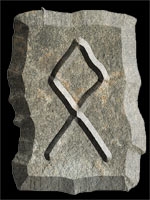
May21-June 20 : Sessrumnir Folkvagner - Hall of “Field Folk”
This Hall is ruled by the goddess Freyja, the “Lady” of the first runic Aett and one of the main deities of the Vanir. Freyja is the goddess of love and magical knowledge, ruler of the Earth and the trees and all of the forest animals. The main runic signifier of this Hall is Othila (bordered byInguz & Dagaz), the rune of acquisition and affirmation. The gemstone signifier for this Hall is the Ruby. The ruling force of this Hall encompasses ancestral heritage, and real property. The runestave Othila translates to “own Earth” or “own Land.” As a runestave, Othila operates to protect the status quo while preserving individual rights and what is passed down through natural heritage. In the spiritual sense, Othila represents feeling “at home” with one Self while finding one’s “place” in the world at large. Othila also represents one’s innate talents or genetically inherited gifts that are a birthright. These talents and gifts are placed at one’s disposal to be used or abused during the current lifetime. Othila is thought to be a very grounding rune however, when it operates as a murkstave, feelings of being “left out” or alienated are common. At these times, it is wise to stop and find one’s center so the spirit can be rebalanced. Natives of this Hall know that “home” is not just a place where you “hang your hat.”
“GUD BLESSI THIG… God Bless You”
Published with permission of Star Logic Astrodynamics, Copyright 2023 ad conitinuum You may republish this article if you give proper accreditation by including this entire statement, make no changes to the original article and include a link back to this site - https://www.lightforcenetwork.com/opir/runeology
- 1488 reads